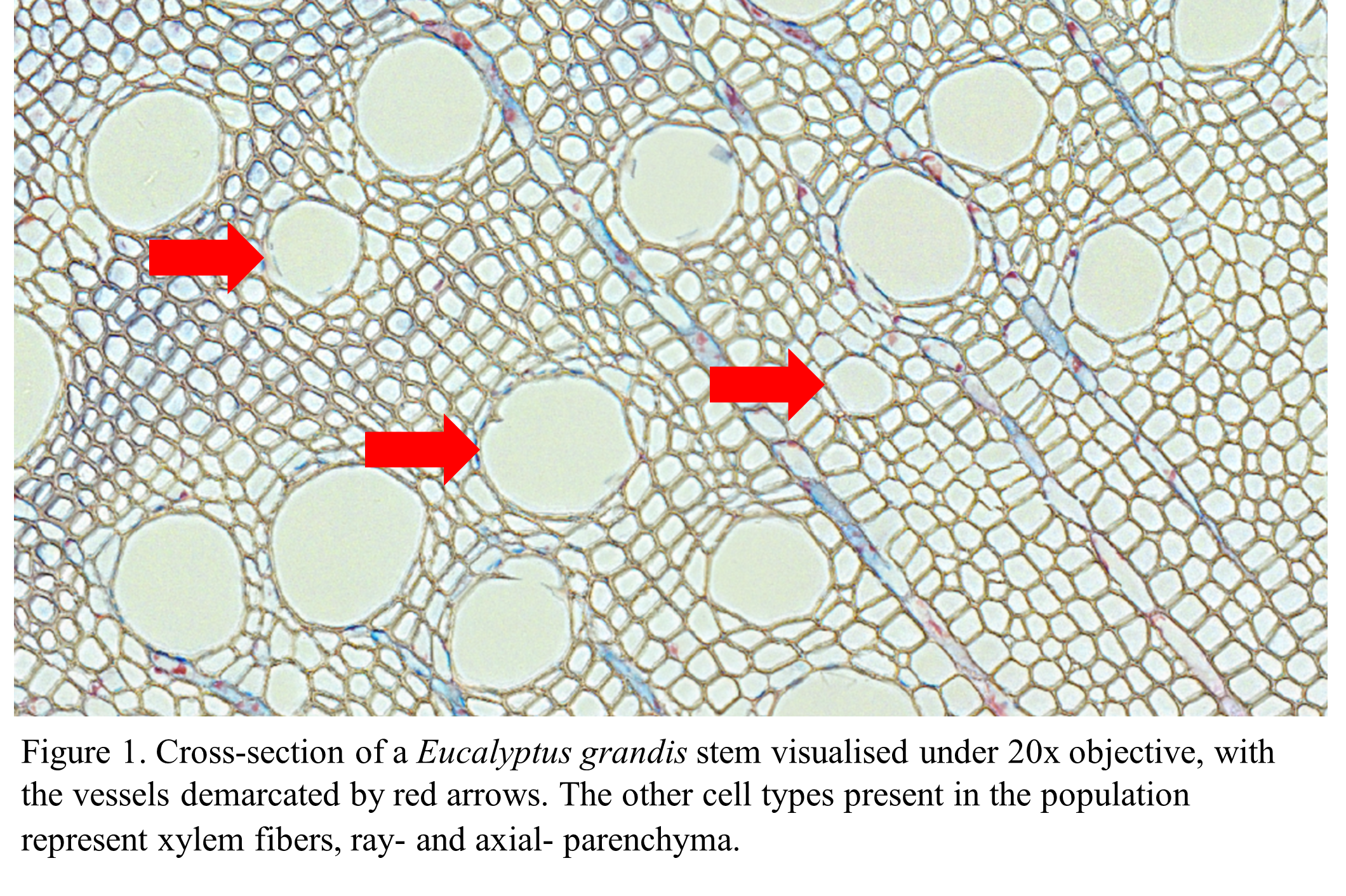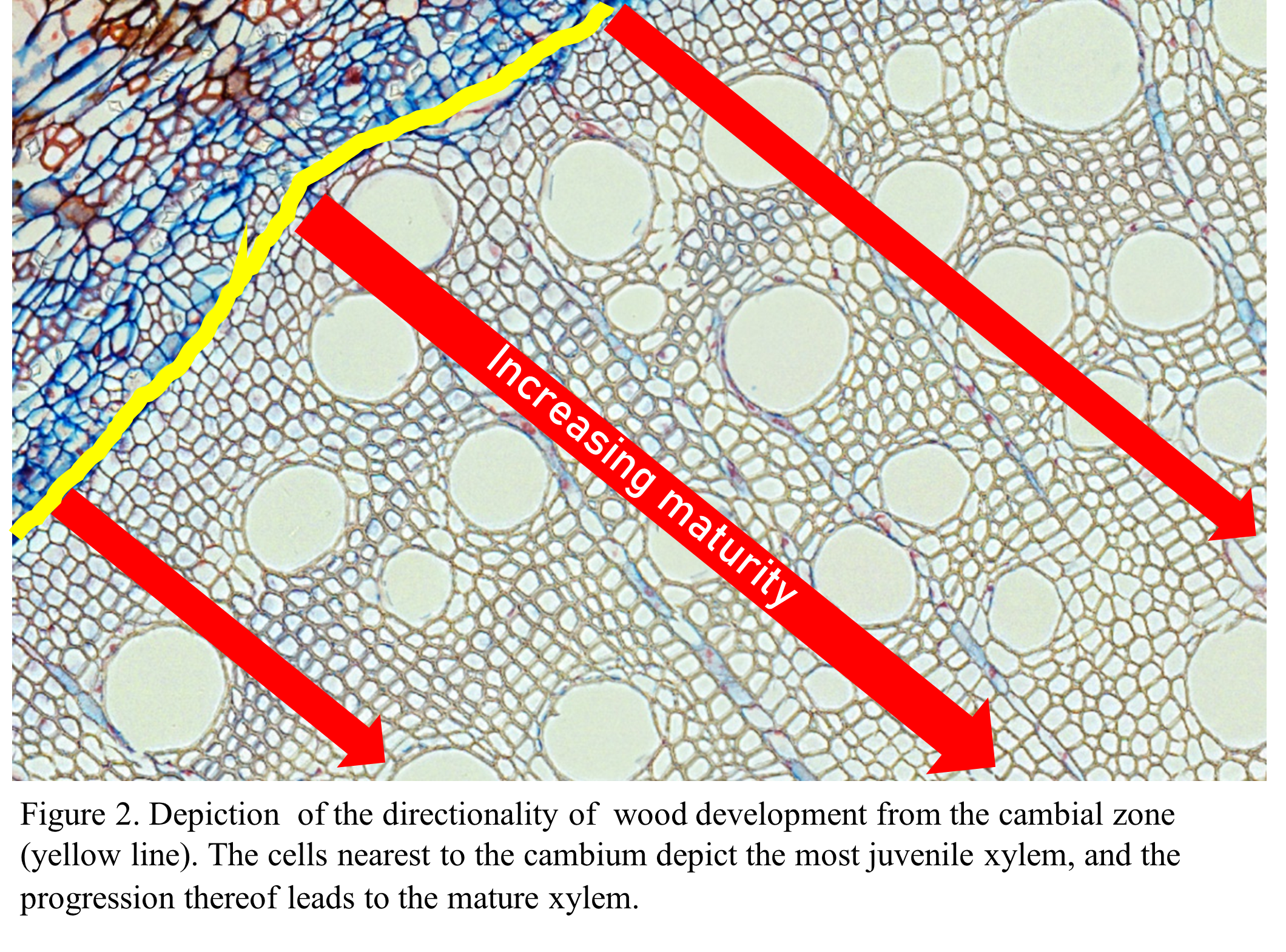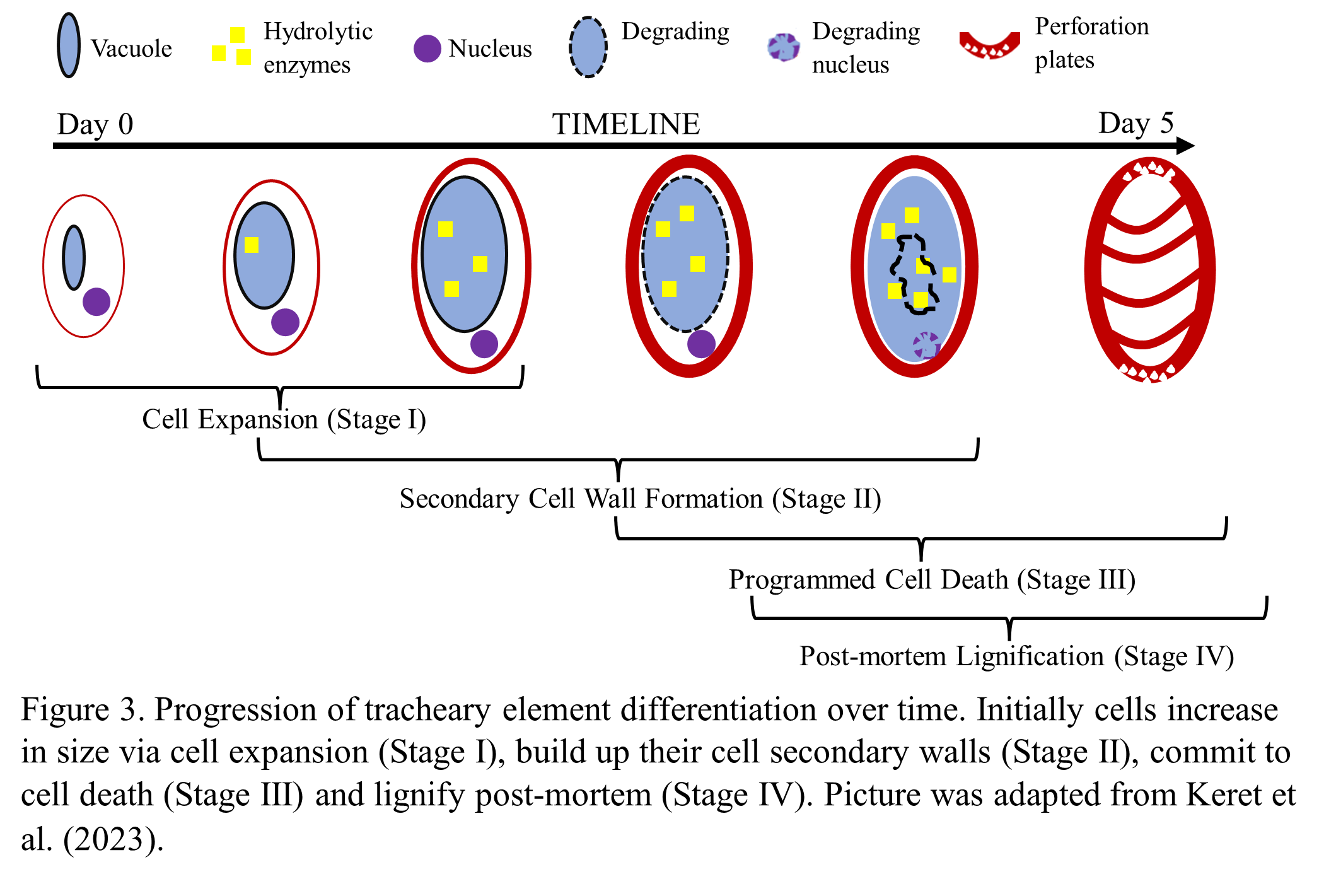
The Hans Merensky Chair in Measuring and Modelling Eucalypt Growth & Wood Formation
Understanding growth in the world's most widely planted hardwoods
Increasing access to tracheary elements for the study of wood developmental dynamics
Post authored by Ph.D. candidate Rafael Keret
* This blog post is based off a recent publication by members of EucXylo and IPB. The reference and link to the publication can be found here: Keret, R., Hills, P. & Drew, D. The evolution of in vitro tracheary element systems from annual to perennial plant species. Plant Cell Tiss Organ Cult (2023). https://doi.org/10.1007/s11240-023-02478-7.
Tracheary elements (TEs), comprising of vessels and tracheids, are astonishing cells that enable the transportation of water and nutrients to take place in plants, even vertically against gravitational forces. To perform such a specialized task, these cells have unique structural features such as impressively large sizes for efficiency, lignified secondary cell walls for waterproofing and strength, perforation plates to connect cells, and pores for lateral water movement. As can be seen in Figure 1, vessels come in many shapes and sizes and that will affect how these will function. For instance, larger vessels can flow more water, whereas smaller ones trade off this efficient water flow, for an increased hydraulic safety. Clearly, the structures of vessels and tracheids are purposely regulated based on the need for water transport versus hydraulic safety.
 So, this raises two broad scale questions, firstly what are the regulators for TE development and secondly, how stringent is the control of this process?
So, this raises two broad scale questions, firstly what are the regulators for TE development and secondly, how stringent is the control of this process?
Unfortunately, we have yet to fully uncover how these complex cells are temporally and spatially regulated within the plant stem. This is because TEs exist at different stages of development in the stem (Figure 2), and additionally are tightly interspersed with other cell types, which makes them challenging to isolate for molecular study. When dealing with plant samples we are often faced with this tissue complexity and are thus limited to making elucidations about the general trends in the cell populations as a whole as opposed to focusing on individual cell types.
 Fortunately, systems for producing TEs outside of the plant body have been developed successfully in herbaceous plants, through numerous iterations. These systems make use of in vitro tissue culture practices to stimulate TEs from plant tissues, either with hormones or by other molecular means. Since TEs are synchronously produced, these can be easily isolated from culture at different time points, to precisely map the molecular events leading up to terminal development (Figure 3). Understanding the molecular control of TEs, at a finer scale, will enable us to more accurately predict how these cells form, what influences their final structures, and why this causes a change in the functionality of the cells.
Fortunately, systems for producing TEs outside of the plant body have been developed successfully in herbaceous plants, through numerous iterations. These systems make use of in vitro tissue culture practices to stimulate TEs from plant tissues, either with hormones or by other molecular means. Since TEs are synchronously produced, these can be easily isolated from culture at different time points, to precisely map the molecular events leading up to terminal development (Figure 3). Understanding the molecular control of TEs, at a finer scale, will enable us to more accurately predict how these cells form, what influences their final structures, and why this causes a change in the functionality of the cells.
 TE induction systems have been optimized in Zinnia Elegans and Arabidopsis Thaliana. Using these plants as models has enabled us to uncover many crucial developmental processes associated with wood formation. Although TE induction systems have been optimized in herbaceous models, translation into woody plants is still necessary to validate whether the differentiation processes hold. Since the systems for producing TEs are far more matured in herbaceous plants, the steps involved can be used as a guide for the adoption of this method into woody plants, so that the molecular events that underpin wood formation can be explored at a finer granularity.
TE induction systems have been optimized in Zinnia Elegans and Arabidopsis Thaliana. Using these plants as models has enabled us to uncover many crucial developmental processes associated with wood formation. Although TE induction systems have been optimized in herbaceous models, translation into woody plants is still necessary to validate whether the differentiation processes hold. Since the systems for producing TEs are far more matured in herbaceous plants, the steps involved can be used as a guide for the adoption of this method into woody plants, so that the molecular events that underpin wood formation can be explored at a finer granularity.
Please feel free to explore this topic further by referring to the review article published recently in “Plant Cell Tissue and Organ Culture”, by PhD candidate Rafael Keret, and supervisors David Drew and Paul Hills. In that review, we explored the evolution of TE induction systems over time, how these can be applied in woody plant species, and what exciting future prospects may be on the horizon once these methods can be successfully applied in trees.